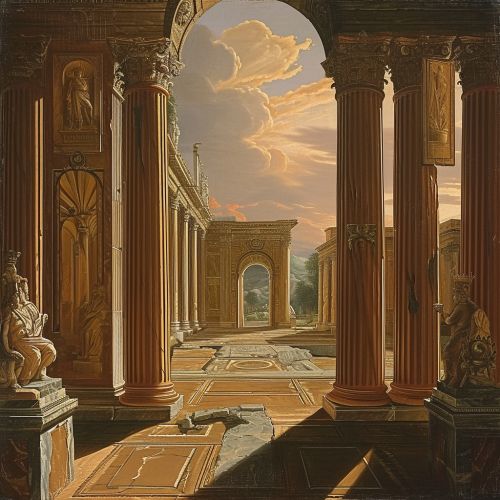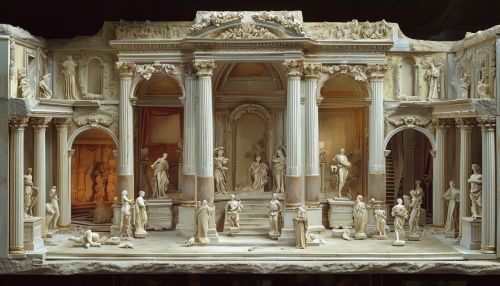Neoclassicism
Origins and Development
Neoclassicism is an artistic and cultural movement that emerged in the mid-18th century, as a reaction against the Rococo style and the excesses of the Baroque period. It sought to revive the principles of ancient Greek and Roman art, emphasizing simplicity, symmetry, and proportion. The movement was inspired by the discovery of ancient ruins at Herculaneum and Pompeii, which provided new insights into classical culture and aesthetics.


Characteristics
Neoclassicism is characterized by its emphasis on order, rationality, and didacticism. It is marked by a renewed interest in classical themes, such as heroism, honor, and civic virtue. The style is known for its grandeur of scale, simplicity of geometric forms, Greek - or Roman-influenced decorative motifs, dramatic use of columns, and a preference for blank walls. The artworks often depict classical themes and subjects drawn from classical history and mythology.
Neoclassicism in Visual Arts
In visual arts, Neoclassicism is characterized by a restrained and sober aesthetic, in stark contrast to the flamboyant and ornate Rococo style that preceded it. Artists such as Jacques-Louis David and Jean-Auguste-Dominique Ingres were key figures in this movement. Their works often depicted historical or mythological subjects, executed with a high degree of realism and attention to detail. The compositions were typically symmetrical, with a clear and stable arrangement of figures.
Neoclassicism in Architecture
Neoclassical architecture was a response to the ornate Baroque and Rococo styles. It was characterized by a return to the principles of Greek and Roman architecture, including symmetry, proportion, and a focus on the functionality of buildings. Architects such as Robert Adam, John Soane, and Karl Friedrich Schinkel were key figures in this movement. Notable examples of neoclassical architecture include the United States Capitol, the Brandenburg Gate in Berlin, and the Palais Bourbon in Paris.
Neoclassicism in Literature
Neoclassical literature was characterized by its emphasis on order, rationality, and decorum. Its themes were drawn from classical mythology and history, and its forms and rules were derived from classical authors such as Homer, Virgil, and Horace. Writers such as Alexander Pope, Jonathan Swift, and Samuel Johnson were key figures in this movement.
Neoclassicism in Music
Neoclassicism also had a significant impact on music, particularly in the early 20th century. Composers such as Igor Stravinsky, Sergei Prokofiev, and Paul Hindemith sought to return to the formal balance and emotional restraint of classical music, as a reaction against the perceived excesses of Romanticism and the avant-garde.
Impact and Legacy
The impact of Neoclassicism is evident in the enduring popularity of works from this period and the continued influence of its principles on contemporary art and architecture. The movement's emphasis on order, symmetry, and proportion continues to inform the design of buildings and public spaces today. In addition, the neoclassical ideals of civic virtue and moral clarity have had a lasting impact on Western culture.
